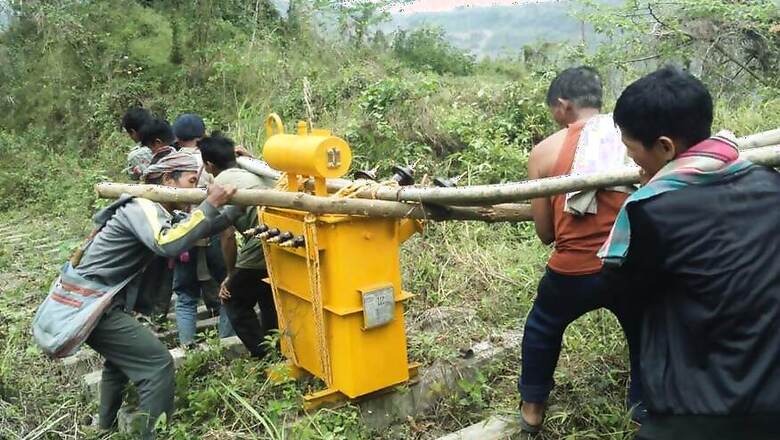
views
New Delhi: Data analysed and presented by the government show that approximately 94% of the villages in India were already electrified before May 2014.
Prime Minister Narendra Modi on Sunday announced that his government has achieved 100% electrification of all villages in India with the last village of Leisang in Manipur being connected to the power grid on Saturday.
According to government data, 5,61,613 villages were electrified till October 31, 2013. As per the 2001 Census, there were a total of 5,93,732 villages in India while the present government uses the 2011 census that says the country has 5,97,464 villages.
A back of the envelope calculation tells us that 93.99% villages were already electrified by October 31, 2013, half a year before the Modi government took over. Since then, the ruling government has electrified 35,851 villages in four years.
According to data from government sources, less than 8 percent of the newly electrified villages have all homes with electricity.
A village is considered electrified if 10% of the total number of households in the village have electricity. This is apart from the basic infrastructure and electrification of certain public centers of the village. The Standing Committee on Energy (2013) had observed that according to this definition, a village would be called electrified even if up to 90% of households in it do not have the basic electricity connection.
The Committee recommended that the actual electrification requirement of villages must be assessed and it should be ensured that the state discoms provide electricity to the remaining households in these village.
I salute the efforts of all those who worked tirelessly on the ground, including the team of officials, the technical staff and all others, to make this dream of a #PowerfulIndia a reality. Their efforts today will help generations of Indians in the coming years. pic.twitter.com/t8WjZgpNuT— Narendra Modi (@narendramodi) April 29, 2018
The Standing Committee also noted that while the rural electrification scheme looks at creating infrastructure, the actual supply of electricity to households rests with the state discoms who are already plagued with huge financial losses and hence are unable to supply electricity to the villages.
Discoms continue to supply subsidised power to agricultural and residential consumers, resulting in revenue losses. Further, the average technical and commercial losses (theft and pilferage of electricity) (AT&C losses) are at around 25%. While the Ujjwal Discom Assurance Yojana (UDAY) has eased off some of the financial losses of the discoms, it remains to be seen whether discoms are able to reduce the cost-tariff gap and AT&C losses in the future.
Under the rural electrification scheme, the cost for providing free electricity connection to a BPL household is Rs 3,000. The Standing Committee further observes that this cost per household may be inadequate. Due to the low cost, the quantity and quality of work has been getting compromised leading to poor implementation of the scheme. It has been recommended that the power ministry should revisit the cost provided under the scheme.
The power scenario, however, is not as grim as it seems. According to the World Bank, electricity had reached 82% of the Indian population by 2016, up from the 1990 record of 43%. Still, of the one-quarter of the global population without electricity in 2016, about 239 million people belonged to India, a Bloomberg report said.
According to the ministry, connecting all households would require 28 gigawatts (GW) of power generation capacity. Underutilized capacity, fuel shortages and overdue payments from distribution companies have put nearly 75 gigawatts of power projects under financial stress, according to industry lobby group Association of Power Producers.



















Comments
0 comment